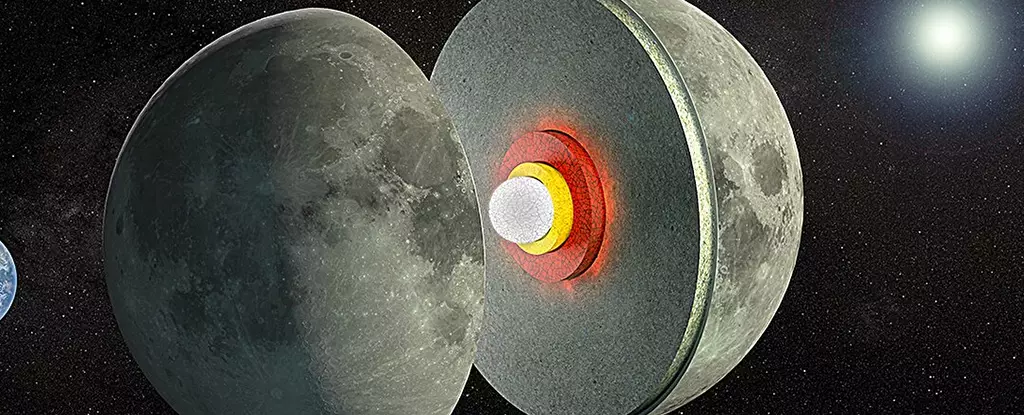The Moon, Earth’s closest celestial neighbor, has always intrigued astronomers and geologists alike. Among the many questions surrounding its formation and evolution, one of the most compelling is the structure of its internal layers. Recent studies suggest the possibility of a partially-molten layer beneath the Moon’s rocky mantle, which, if confirmed, would significantly alter our understanding of its geology and thermal history. Researchers, including a team from NASA’s Goddard Space Flight Center and the University of Arizona, are employing cutting-edge techniques to probe beneath the Moon’s surface, unveiling secrets that have long remained obscured.
For years, the concept of a partially-molten region beneath the Moon’s solid exterior has circulated in scientific discourse. The latest study focuses on the Moon’s response to gravitational forces exerted by Earth and the Sun, an area of research that has garnered little empirical evidence until now. Utilizing advanced data from NASA’s Gravity Recovery and Interior Laboratory (GRAIL) and Lunar Reconnaissance Orbiter, researchers could assess tidal influences on lunar shape and gravity, revealing a potential low-viscosity zone (LVZ) within the Moon’s mantle. This newfound flexibility indicates that the Moon is not as solid as previously believed, sparking questions about its formation and thermal dynamics.
The gravitational pull of the Earth and Sun manifests in lunar tidal actions, yet not in the same way we observe ocean tides on Earth. Instead, these tidal influences reshape the Moon’s structure and gravitational field, causing it to bulge and flatten. Through extensive modeling based on observational data, scientists are beginning to understand how these changes occur over time. The revelation that the lunar mantle consists of a “goopy” layer that shifts in response to external forces suggests a complex interaction between solid and semi-liquid states—a phenomenon that could redefine our understanding of lunar geology.
The Case for a Viscous Layer
The evidence supporting the existence of a low-viscosity zone rests on the assertion that the characteristics of the Moon’s mass can only be adequately explained if this layer exists. The researchers’ findings indicate that this viscous zone would most likely result from partial melting, raising further inquiries into its formation and persistence over billions of years. What conditions kept this zone molten? How did it come to exist in the first place? These questions lead to investigations into the mineralogical makeup of the lunar mantle, specifically focusing on ilmenite—a titanium-iron oxide mineral. The possibility of a rich ilmenite layer providing conditions conducive to partial melting opens new avenues for understanding not only the Moon but also other celestial bodies, such as Mars, where seismic studies suggest similar formations.
Understanding the potential for a partially-molten layer beneath the Moon’s surface holds significant implications for future lunar exploration, especially in light of plans for establishing a permanent base. Seismic readings from such a base could provide firsthand data crucial for validating or refuting current hypotheses regarding the Moon’s interior. A better grasp of the Moon’s thermal state and evolution will enhance our knowledge of planetary formation and lead to advancements in how we explore not just our Moon, but other planets and moons across the solar system.
The ongoing exploration and analysis of the Moon’s internal structure signify a transformative era in planetary science. The identification of a partially-molten layer could unlock insights into the Moon’s past, aiding our understanding of the formative processes of celestial bodies. This research underscores the importance of continued scientific inquiry into the mysteries of the universe, as every discovery opens new doors and challenges previous assumptions. As we stand at the threshold of further lunar exploration, we must remain open to the possibilities that lie beneath our feet—not just on the Moon, but beyond. The path forward is filled with questions, discoveries, and the promise of knowledge yet to be realized.

